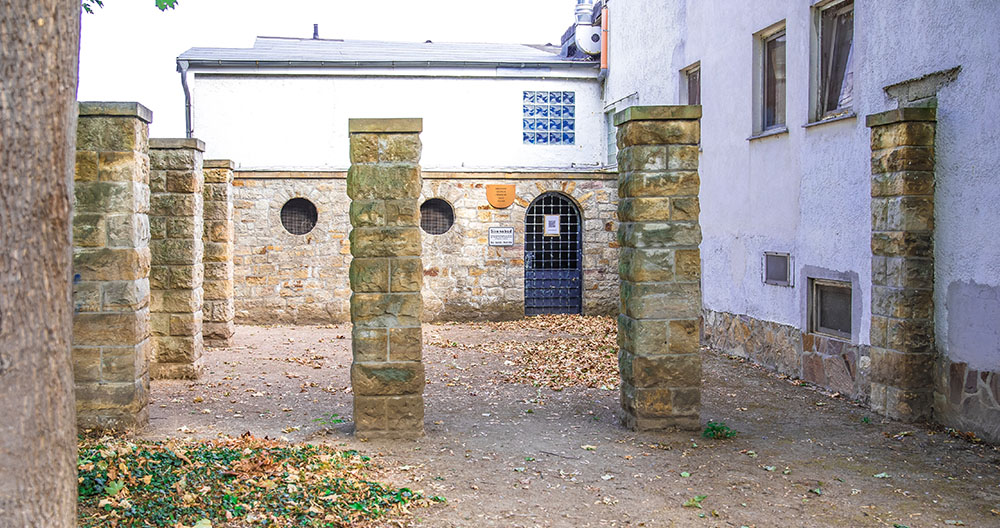
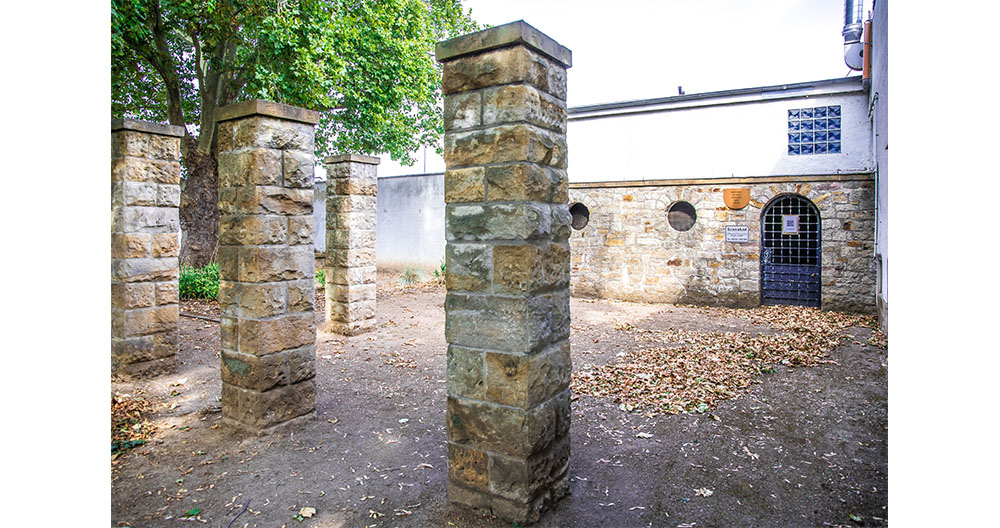
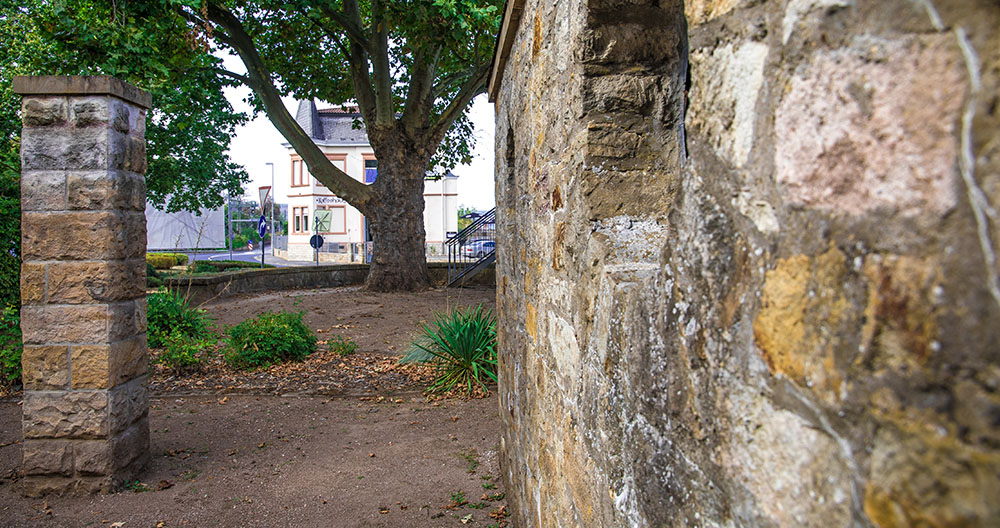
Read here
It’s the year 100 BC. The Roman Julia Frontina enters the bathing hall near the Roman settlement Boconica.
Julia is in poor health and asks the goddess Sirona for help – hoping that the water of the holy spring will help her.
OT Hans-Peter Hexemer, Nierstein History Association
The Romans were very well represented in Rheinhessen; and Mainz and Worms were large Roman settlements. Between Mainz and Worms there was a settlement called Buconica, a military camp. The Romans discovered the springs and they were convinced of the healing power of the water.
The curative water still flows here today, fed by two fresh water springs and two sulfur springs. Modern analyses have shown that the high content of minerals in the water can really have a healing effect, for example with regard to asthma, rheumatism or gout. The spring water apparently helped the Roman Julia. She donated a votive stone that reads: “To the gods Apollo and Sirona, Julia Frontina fulfills her vow duely and joyfully.”
With the end of Romas the spring got forgotten. For over € 1,500 years.
OT Hans-Peter Hexemer, Nierstein History Association
The spring has been rediscovered because a scientist smelled sulphurous water at the bank of the Rhine. It is a great coincidence that because of this the spring was rediscovered. Under the rule of the French in 1803, the city leased this spring to the Belgian Martin van der Velden. And from then on, the Sirona bath was used and got accessible again.
Van der Velden had the Sirona springs redesigned and began to sell the healing water. Stone tablets still bear witness to the time under the French rule.
OT Hans-Peter Hexemer, Nierstein History Association
In the middle of the 19th century another owner rebuilt the bath to its current form, namely the Mainz city councilor Pfeifer.
Pfeiffer expanded the facility for the spa business. He had the bathing hall and fountain renewed, based on a Roman style and also built accommodation for spa guests.
In the 20th century, the brand name “Sirona” was a well-known term kitchen: the water was used to produce a special cornstarch. Invoices from the beginning of 1900 show that Sirona-Company sold their products internationally.
Today it got quiet again in the spring sanctuary deep underground. The whole complex is under monument protection. But in a quiet corner, the holy Sirona still watches over her small kingdom with the healing springs.
OT Hans-Peter Hexemer, Nierstein History Association
The Romans were very well represented in Rheinhessen; and Mainz and Worms were large Roman settlements. Between Mainz and Worms there was a settlement called Buconica, a military camp. The Romans discovered the springs and they were convinced of the healing power of the water.
The curative water still flows here today, fed by two fresh water springs and two sulfur springs. Modern analyses have shown that the high content of minerals in the water can really have a healing effect, for example with regard to asthma, rheumatism or gout. The spring water apparently helped the Roman Julia. She donated a votive stone that reads: “To the gods Apollo and Sirona, Julia Frontina fulfills her vow duely and joyfully.”
With the end of Romas the spring got forgotten. For over € 1,500 years.
OT Hans-Peter Hexemer, Nierstein History Association
The spring has been rediscovered because a scientist smelled sulphurous water at the bank of the Rhine. It is a great coincidence that because of this the spring was rediscovered. Under the rule of the French in 1803, the city leased this spring to the Belgian Martin van der Velden. And from then on, the Sirona bath was used and got accessible again.
Van der Velden had the Sirona springs redesigned and began to sell the healing water. Stone tablets still bear witness to the time under the French rule.
OT Hans-Peter Hexemer, Nierstein History Association
In the middle of the 19th century another owner rebuilt the bath to its current form, namely the Mainz city councilor Pfeifer.
Pfeiffer expanded the facility for the spa business. He had the bathing hall and fountain renewed, based on a Roman style and also built accommodation for spa guests.
In the 20th century, the brand name “Sirona” was a well-known term kitchen: the water was used to produce a special cornstarch. Invoices from the beginning of 1900 show that Sirona-Company sold their products internationally.
Today it got quiet again in the spring sanctuary deep underground. The whole complex is under monument protection. But in a quiet corner, the holy Sirona still watches over her small kingdom with the healing springs.
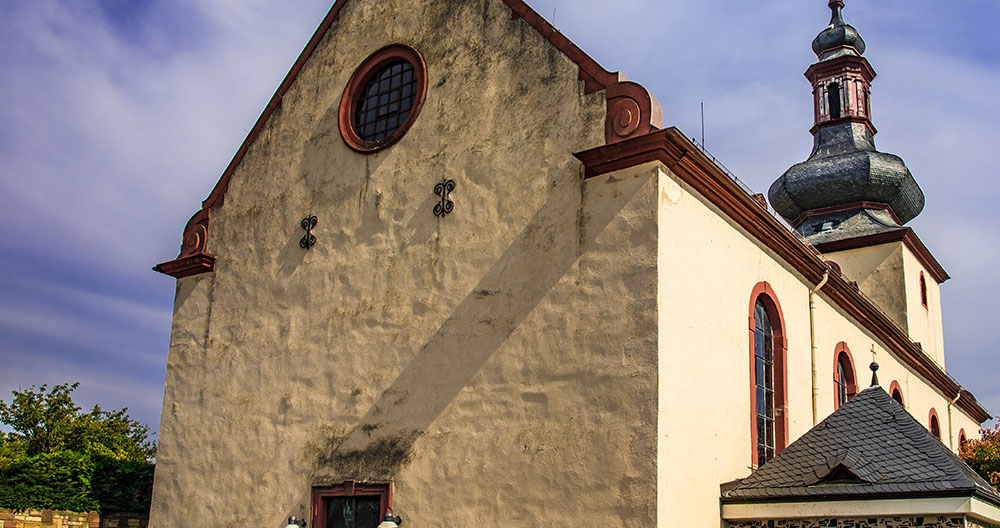
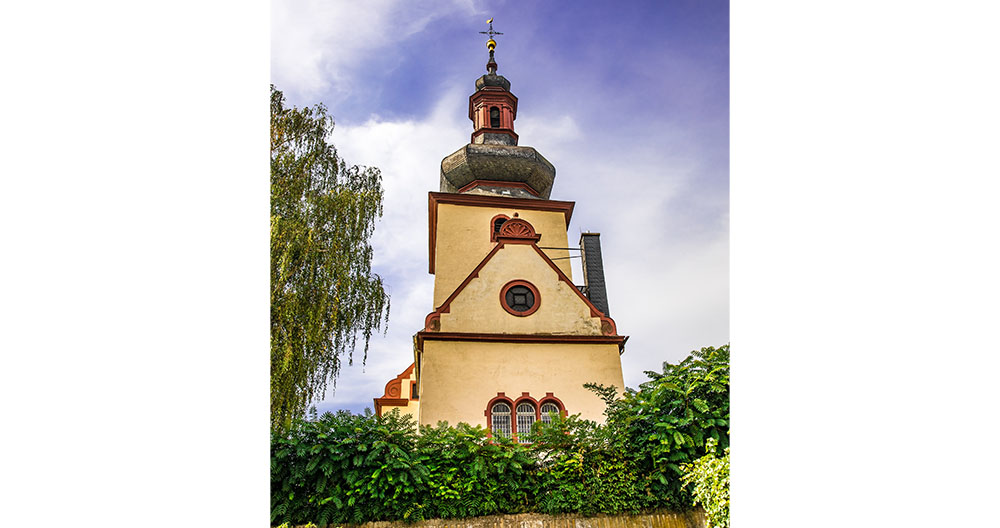
Read here
It’s the year 100 BC. The Roman Julia Frontina enters the bathing hall near the Roman settlement Boconica.
Julia is in poor health and asks the goddess Sirona for help – hoping that the water of the holy spring will help her.
OT Hans-Peter Hexemer, Nierstein History Association
The Romans were very well represented in Rheinhessen; and Mainz and Worms were large Roman settlements. Between Mainz and Worms there was a settlement called Buconica, a military camp. The Romans discovered the springs and they were convinced of the healing power of the water.
The curative water still flows here today, fed by two fresh water springs and two sulfur springs. Modern analyses have shown that the high content of minerals in the water can really have a healing effect, for example with regard to asthma, rheumatism or gout. The spring water apparently helped the Roman Julia. She donated a votive stone that reads: “To the gods Apollo and Sirona, Julia Frontina fulfills her vow duely and joyfully.”
With the end of Romas the spring got forgotten. For over € 1,500 years.
OT Hans-Peter Hexemer, Nierstein History Association
The spring has been rediscovered because a scientist smelled sulphurous water at the bank of the Rhine. It is a great coincidence that because of this the spring was rediscovered. Under the rule of the French in 1803, the city leased this spring to the Belgian Martin van der Velden. And from then on, the Sirona bath was used and got accessible again.
Van der Velden had the Sirona springs redesigned and began to sell the healing water. Stone tablets still bear witness to the time under the French rule.
OT Hans-Peter Hexemer, Nierstein History Association
In the middle of the 19th century another owner rebuilt the bath to its current form, namely the Mainz city councilor Pfeifer.
Pfeiffer expanded the facility for the spa business. He had the bathing hall and fountain renewed, based on a Roman style and also built accommodation for spa guests.
In the 20th century, the brand name “Sirona” was a well-known term kitchen: the water was used to produce a special cornstarch. Invoices from the beginning of 1900 show that Sirona-Company sold their products internationally.
Today it got quiet again in the spring sanctuary deep underground. The whole complex is under monument protection. But in a quiet corner, the holy Sirona still watches over her small kingdom with the healing springs.
OT Hans-Peter Hexemer, Nierstein History Association
The Romans were very well represented in Rheinhessen; and Mainz and Worms were large Roman settlements. Between Mainz and Worms there was a settlement called Buconica, a military camp. The Romans discovered the springs and they were convinced of the healing power of the water.
The curative water still flows here today, fed by two fresh water springs and two sulfur springs. Modern analyses have shown that the high content of minerals in the water can really have a healing effect, for example with regard to asthma, rheumatism or gout. The spring water apparently helped the Roman Julia. She donated a votive stone that reads: “To the gods Apollo and Sirona, Julia Frontina fulfills her vow duely and joyfully.”
With the end of Romas the spring got forgotten. For over € 1,500 years.
OT Hans-Peter Hexemer, Nierstein History Association
The spring has been rediscovered because a scientist smelled sulphurous water at the bank of the Rhine. It is a great coincidence that because of this the spring was rediscovered. Under the rule of the French in 1803, the city leased this spring to the Belgian Martin van der Velden. And from then on, the Sirona bath was used and got accessible again.
Van der Velden had the Sirona springs redesigned and began to sell the healing water. Stone tablets still bear witness to the time under the French rule.
OT Hans-Peter Hexemer, Nierstein History Association
In the middle of the 19th century another owner rebuilt the bath to its current form, namely the Mainz city councilor Pfeifer.
Pfeiffer expanded the facility for the spa business. He had the bathing hall and fountain renewed, based on a Roman style and also built accommodation for spa guests.
In the 20th century, the brand name “Sirona” was a well-known term kitchen: the water was used to produce a special cornstarch. Invoices from the beginning of 1900 show that Sirona-Company sold their products internationally.
Today it got quiet again in the spring sanctuary deep underground. The whole complex is under monument protection. But in a quiet corner, the holy Sirona still watches over her small kingdom with the healing springs.


